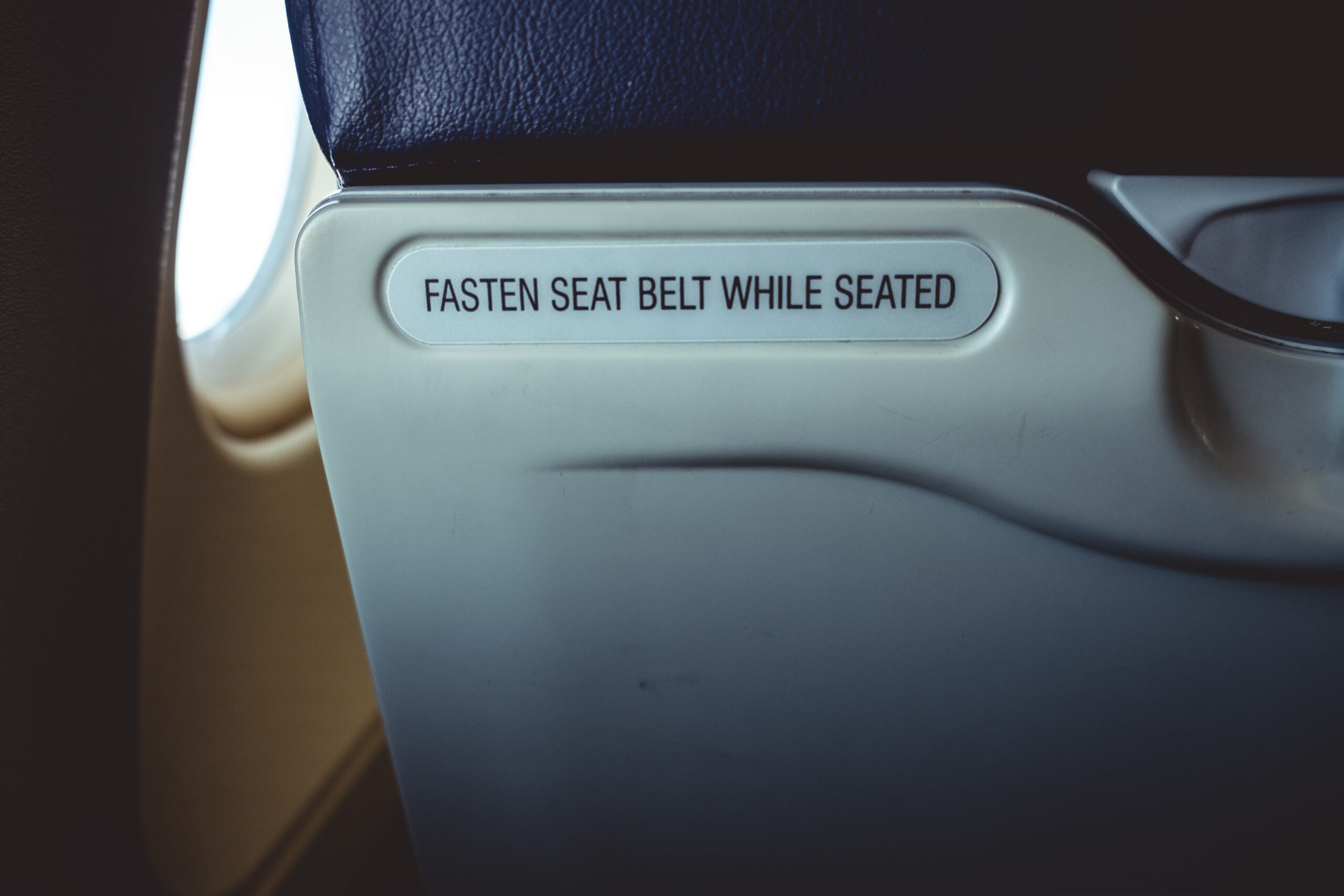The first time I flew with my baby, he was only 10 weeks old and we were flying from the UK to Canada. We were equally excited and nervous. While it hadn’t been our intention to fly with our baby so far so young, it did give us a wonderful opportunity to boost our confidence early on. There are so many things I would’ve done differently on that flight. One of the main things would’ve been utilizing the airplane bassinet seats. Being so new to parenthood in general, I didn’t know how the bassinet seats worked. I thought you might have to pay extra and just felt too scared to try. Looking back, it would’ve made our flight so much easier. Especially on that overnight flight back, it could’ve taken some of the pressure off. We’ve since taken advantage of this perk and wow, it really does make all the difference. While not all airlines offer bassinets for all flights, here’s everything I wished I’d known then so I could book and fly the airplane bassinet with my new baby.
Airplane Bassinets
What is an Airplane Bassinet?
An airplane bassinet is a baby bed that attaches to the bulkhead to give parents a safe place to put their baby down during flight. It is a general term for two different baby seat attachments: a flatbed and a more chair-like seat. Many larger carriers, like British Airways or Qatar, offer them to families traveling with small children. It attaches to the hard bulkhead separator almost like a shelf with a baby seat on top. It allows you a safe space to either lie your baby down or to sit them. This allows you to eat or even just take a little nap yourself, which can help offset that jetlag. Many parents use the bassinets as a seat for their baby but choosing the adult seat itself can be helpful. This bulkhead seat generally comes with some extra leg room giving slightly older children a bit more room to wiggle.
Types of Airplane Bassinets
Normally, airlines have two different bassinet seat attachment designs. One of the attachments is a more traditional-looking bassinet that lies flat. It is perfect for small babies who need to have a lie-flat space. The other attachment is a more upright seat resembling a push-chair/stroller seat, more appropriate for slightly older babies. Both variations have weight restrictions. Be sure you are aware of them on your airline to ensure you are not disappointed.
Eligibility and Restrictions on Airplane Bassinets
Age and Weight Limits for Airplane Bassinets
Eligibility for the bassinet seat differs slightly on each airline. In general, if you are traveling with a lap infant, meaning the baby is under 2, you can qualify for the bassinet seats. Many airlines even offer these seats to parents at no additional cost even though they are considered a ‘premium seat’. In order to use the actual bassinet attachment, the baby must be under a certain weight as mentioned earlier.
Safety Considerations with Airplane Bassinets
To ensure the safety of your child, you must make sure to use the airline’s bassinet correctly.
- Follow airline guidelines: Different airlines have varying regulations regarding the weight and size limits of infants using bassinets. Adhere to these guidelines to ensure the baby’s safety.
- Secure attachment: Once the bassinet is securely attached to the bulkhead by the crew, follow the instructions provided. Double-check for any loose attachments before placing the baby inside.
- Use during stationary periods: Most airlines will ask that you use the bassinet only when the “fasten seatbelt” sign is off. Remove the baby from the bassinet and secure them on your lap or in a child safety seat when the seatbelt sign is on.
- Adequate supervision: Always keep an eye on the baby while they are in the bassinet. Never leave them unattended. If you need to get up for any reason, be sure there is another responsible adult available to watch them. If you are alone, ask a flight attendant for their help.
Booking Airplane Bassinets
Airlines Offering Airplane Bassinets
It is important to note that not all airlines offer airplane bassinets. The availability of bassinets varies among airlines and even among ticket classes. Different airlines have different policies and regulations regarding the provision of bassinets on flights. Some airlines provide bassinets on certain aircraft, usually in the bulkhead area. Others may not have this facility at all. Parents should check with the specific airline they are flying with to determine if bassinets are available on their flight.
Most larger carriers such as United, American, and British Airways usually offer airplane bassinets for long-haul flights. Other carriers who usually offer bassinets on long-haul flights include but are not limited to:
- Delta Airlines
- Qatar Airlines
- Emirates
- China Southern Airlines
- Philippine Airlines
- LATAM Airlines
- AeroMexico
- KLM
- Iberia
- Lufthansa
- Finnair
- TAP
- Aegean Airlines.
Airlines do not always offer bassinets on all flights. Parents should check with the airline for their specific flight before booking to ensure they are not disappointed.
How to Request an Airplane Bassinet
Once you’ve made sure that bassinets are available with the airline for your flight, you can go ahead and book your trip. Most airlines allow passengers to request bassinets during the booking process or through their customer service channels. When booking online, look for an option to specify the need for a bassinet or call the airline’s customer service to make the request. Remember, bassinets are limited and offered on a first-come, first-served basis, so early reservation is key. They may ask you to call at a specified time closer to the flight or even ask you to request it at check-in on the day of. Specifics on how to make your request are often available on the airline’s website or can be asked to customer service when enquiring about the availability of bassinets on the flight.
When to Book Airplane Bassinets
Again, it is first come, first serve in regards to bassinet availability and while I’ve personally never encountered a situation where all bassinets were already taken before requesting mine, it is certainly something that can happen, especially on popular routes. Ensuring you secure the appropriate seats early and filing that bassinet request can ensure you have the best chance possible at getting the bassinet. It can be worth preparing yourself to not have the bassinet available to you as well. Even if you are granted access to a bassinet, it is possible to be on a flight with extreme turbulence in which case it would not be safe to use the bassinet and therefore you would not be able to use it. Ensure you have another plan by packing baby items such as a carrier, extra travel pillow, etc, to make your flight as comfortable for you and your baby as possible is still a really good idea.

Airplane Bassinets in Different Travel Classes
Economy Class
Economy class on most airlines often provides a limited number of bassinets, typically positioned at bulkhead rows. In these rows, you get more leg room but this is largely taken up by the bassinet. You are also usually not allowed to let your child play on the floor in these seats. Because of the limited area of mobility due to the protruding bassinet, it can make it difficult for the person sat at the window seat to vacate their seat should they need to use the toilet or access the overhead bin. If you do wish to sit in the window seat, you may wish to pack essential items in your carry-on for quick access during the flight as you will need to store your carry-on in the overhead bin during takeoff and landing. You may also consider babywearing to keep your hands free while navigating the confined space of economy class, especially if you experience unforeseen turbulence and are unable to use the bassinet.
Business Class
While not every airline’s business class will provide bassinet seating, some do in specific seats. Business class, in general, often provides more spacious seating, allowing for greater ease in managing an infant. The bassinet-equipped business class seats sometimes even offer more room than a normal business class seat. Some airlines also offer dedicated flight attendants to assist families traveling with infants in business class to ease the burden on traveling parents through an extra pair of eyes and hands. Enhanced business class in-flight entertainment systems often also include a selection of children’s programs to help keep little ones entertained. Business class passengers also usually enjoy the luxury of lie-flat seats and more privacy, providing a quieter and more comfortable environment for both parents and infants. Airlines also may offer additional amenities such as premium bedding and noise-canceling headphones, enhancing the overall experience of flying with a baby.
First Class
Similarly to business class, not all airlines offer bassinets in their first-class cabins. Those that do, however, often provide exclusive and personalized services for families traveling with infants. Some airlines offer private suites with a dedicated space for the baby, ensuring maximum comfort and privacy. First-class cabins are designed for luxury, featuring spacious seats, high-end bedding, and gourmet dining options. Private suites with closing doors provide a tranquil environment for families. They allow parents and infants to enjoy the journey with a heightened sense of exclusivity.
Using a bassinet on long-haul flights can really help give parents flying with small children the break they desperately need. Even if it’s to eat or just rest your arms, a bassinet can make sure baby has a safe and appropriate space for them to relax on your flight. Making sure you take the proper steps with enough time can help you ensure you secure a bassinet seat but it is always good to be prepared with a plan-b in the case of unavailability or turbulence.
Check out my e-book, How to Travel with A Baby.
Everything you need to know about traveling with a baby in just 56 pages.
Subscribe to my e-mail list.
Get access to exclusive content and be the first to know about new content.

